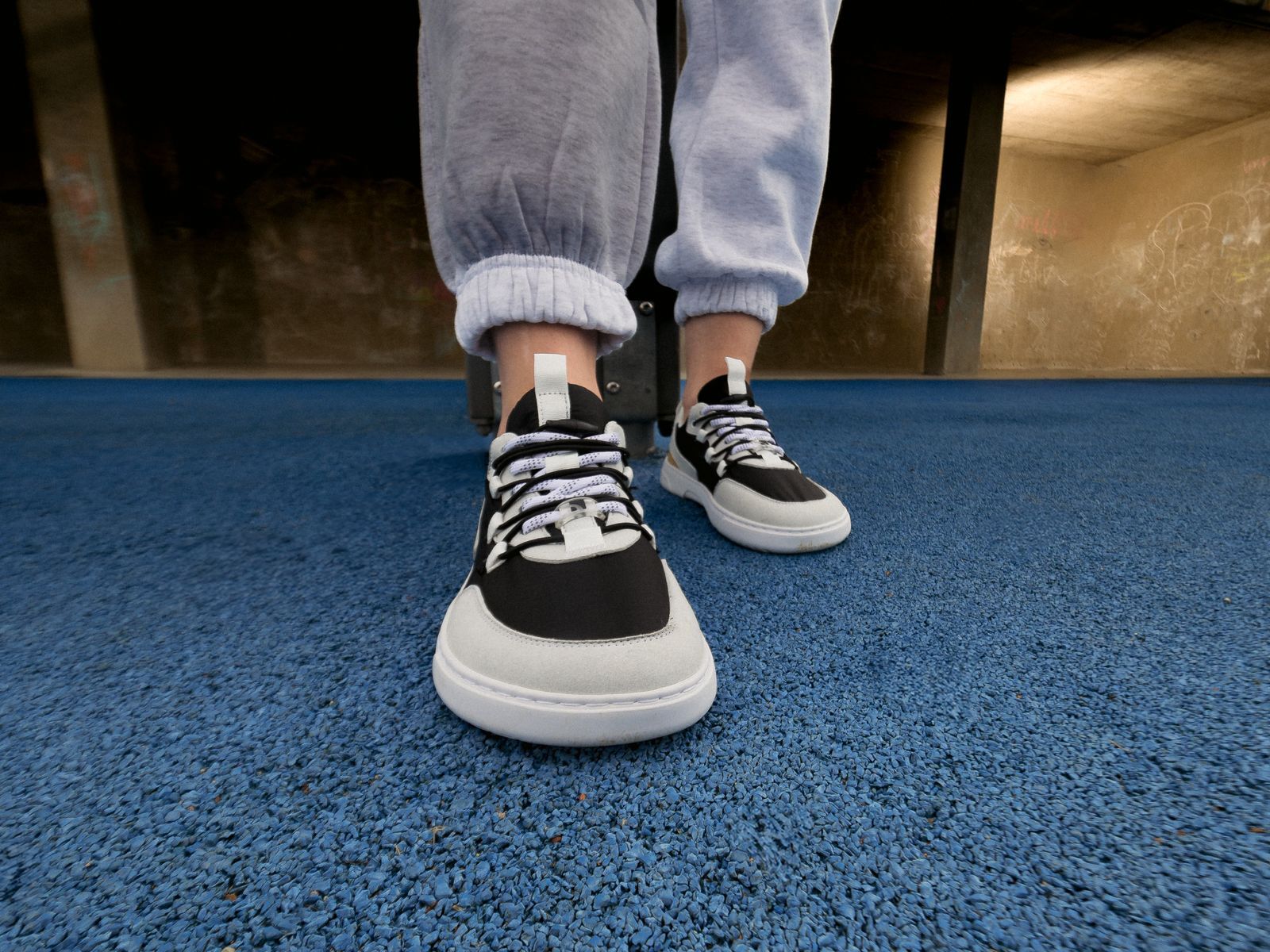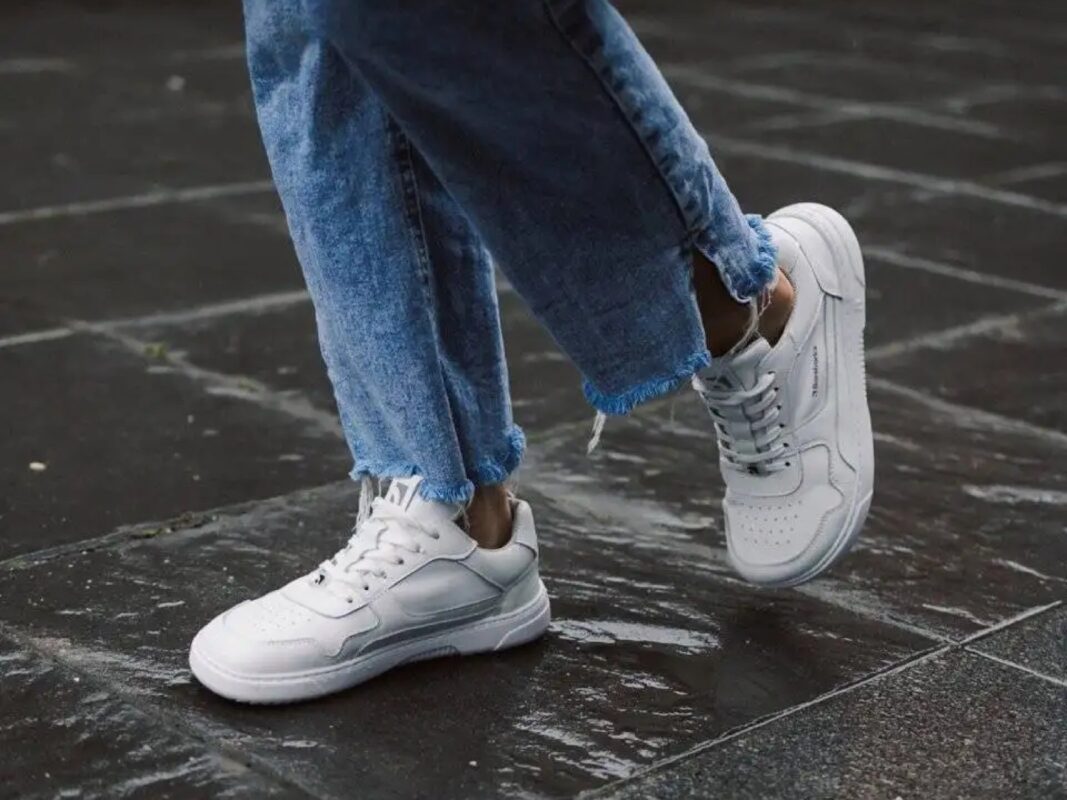Postures’ role in our overall and long-term health is crucial; it affects several aspects including body balance and muscle alignment. But shoe trends and footwear are working against our health and affecting it negatively by scrunching our feet and toes in tight shoes with tight toe boxes, resulting in unhealthy body posture, weak body muscles, and several foot issues. Barefoot shoes made a revolution in the footwear market, introducing healthy shoes that mimic the natural foot shape and encourage healthy movement and body posture.
Traditional Shoe Effects on Body and Health
Traditional Footwear seems to look comfortable with the over-support offered by thick soles, the drop formed by the difference in height of the sole, and the thick unbreathable materials. All these interfere with the feet’ natural movement and affect it negatively. Will mention here some of the main issues caused by traditional shoes:
- Restricted Toe Movement: Most traditional shoes are made with narrow toe boxes, where toes are scrunched and squeezed to fit in. This compression affects the toes’ ability to spread as they are intended to naturally.
- Heel Drop: The difference in sole thickness results in a heel drop, although sometimes the drop is slight its impact on health is still big since it results in shifting the body’s center of gravity forward affecting its balance, and posture, and causing pressure on the spine.
- Depending on Arch Support: Some cases require arch support but once it exceeds, foot muscles depend on the arch support and become weaker with time.
- Reduced proprioception: Thick sole prevents feet from engaging with different grounds and surfaces, and restricts feet from flexing resulting in weaker feet with less ability to move and position properly.
Barefoot Main differences:
As mentioned before, traditional footwear has several negative effects on health. Barefoot shoes were found to solve these issues, and studies found that they have done so far. Here are some of the main issues that traditional shoes cause and barefoot shoes solve:
- Natural Foot Positioning: Barefoot shoes with zero drop thin soles, and wide toe box keep feet in their natural shape, with the ability to move easily and feel the ground. Although it might seem at first sight that traditional shoes that offer more support are more comfortable; after trying barefoot shoes and testing the difference, you will see its impact on foot positioning, body balance, spine alignment, and posture by yourself.
- Stronger Foot Muscles: Traditional shoes with thick soles, offer the feet more support than needed, resulting in weakening the foot muscles that are responsible for movement and active engagement. With barefoot shoes, and especially Barebarics barefoot shoes with ultra-thin 4mm soles and minimum support, foot muscles engage more in movement which results in better foot health, and less risk of common foot issues such as flat feet, and fallen arches.
- Proper Weight Distribution: Then ultra-thin and flexible soles in barefoot shoes, allow feet to feel the ground while moving and receive sensory feedback, resulting in better body balance and weight distribution that impacts the body posture and stance in the long term.
- Less back Pain & Joint Issues: The wide toe box encourages toes to spread naturally which improves a better base support resulting in increased stability. Feet stability affects all body positively and reflects clearly on body posture, knees, hips, and back health.
How to Transition to Barefoot Sneakers Safely?
With the increasing awareness campaigns about shoes’ impact on health, many people are transitioning to barefoot shoes. But this decision should be taken after being well-educated and informed about barefoot shoes, since a wrong transformation process may be painful and cause several problems. Here are the main points to be aware of when trying to transition into barefoot shoes:
- Start Gradually: As mentioned above, barefoot characteristics differ from traditional shoes. So for people who have been wearing traditional shoes for years and years, it isn’t appropriate to convert immediately to wearing barefoot shoes. Thus, the transition must be gradual. Start by wearing barefoot shoes for short periods and increase the time gradually until you can transform completely.
- Exercise Your Feet: Feet that have been stuck in traditional shoes for decades need to be exercised properly and continuously to be able to flex and move easily in barefoot shoes on different surfaces.
- Start on soft terrains: In the beginning start walking on flat, and soft surfaces such as carpets, grass, or sand. This helps you to transform faster, once you are walking easily on these surfaces, try harder ones for short periods as a start.
- Watch your walking mechanics: Focus on your walking gait, concentrate, and train to land on your middle foot or front foot and not on the heel.
- Body like another: Listen to your body, there is no general rule for the transformation process. So start gradually, and increase based on your body signs. Note that some pain is normal, but if it exceeds then it’s preferable to slow your transformation process.
Finally, barefoot sneakers aren’t just a trend, it’s a natural movement with positive impacts on health and nature. Many people like to transform into barefoot but they have to compromise style for health. Actually, you don’t; with Barebarics you can have both together. Check Barebarics new collection available now in UAE. Take into consideration the mentioned transitioning tips, and don’t hesitate to contact Barebarics Arabia for more support.


